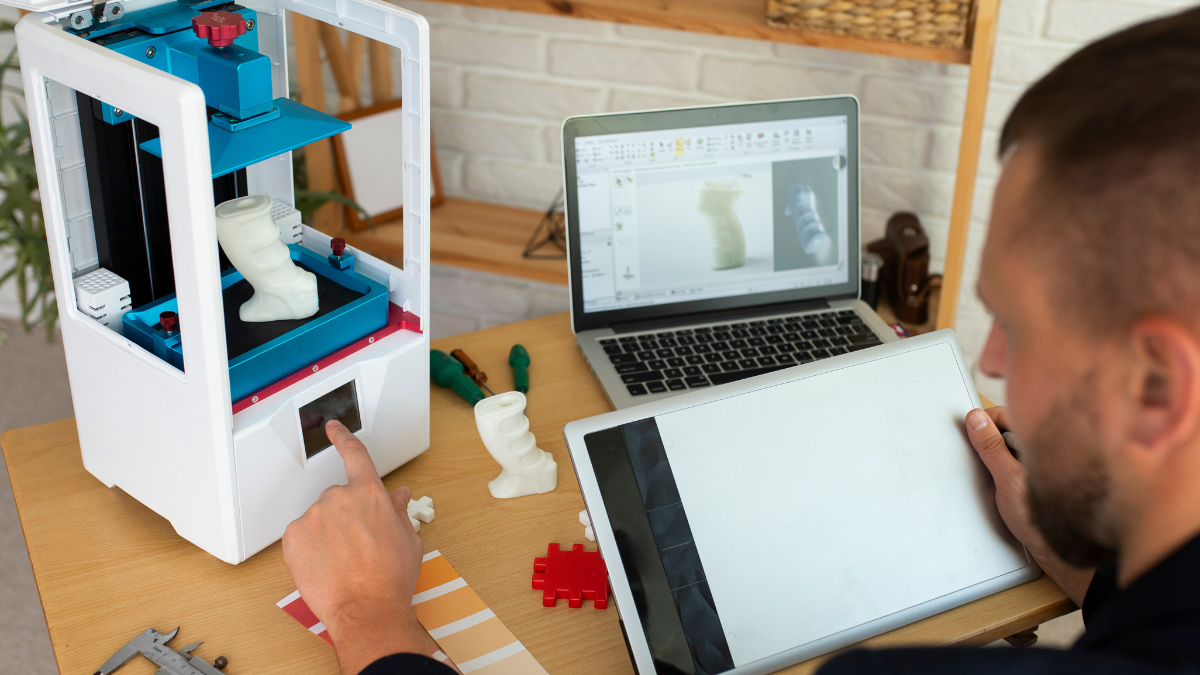BLOG
Influencersginewuld: The Emerging Trend in Digital Influence Explained

In the ever-evolving landscape of digital marketing, new concepts and keywords emerge with startling frequency. One such term beginning to circulate among savvy marketers and social media enthusiasts is “influencersginewuld.” At first glance, this might seem like a jumble of letters or a typographical error—but dig deeper, and it reveals a fascinating intersection of influencer culture, algorithmic trends, and digital evolution. In this comprehensive guide, we will explore what influencersginewuld means, why it matters, and how it fits into the broader context of modern influence on the internet.
What Is “Influencersginewuld”?
While “influencersginewuld” is not a mainstream term as of yet, it appears to be a conceptual mashup rooted in digital and influencer marketing. Breaking the word down:
Influencers: Social media personalities or creators who shape opinions, drive trends, and engage audiences.
Gine: This fragment might derive from “engine” or “generate,” hinting at the idea of algorithmic or data-driven generation.
Wuld: This could be a stylized spelling of “world,” “would,” or even “wild,” suggesting unpredictability or an evolving space.
When taken as a whole, influencersginewuld may refer to a new digital world powered by algorithm-driven influencers—a virtual ecosystem where content creators are not just trendsetters but integral components of a larger influence-generation engine.
The Rise of AI-Driven Influence
To understand the emergence of a concept like influencersginewuld, we need to recognize the technological backdrop enabling its rise.
Today, platforms like TikTok, Instagram, and YouTube don’t simply promote content based on followers. They use sophisticated algorithms to determine what goes viral. The “influencer engine”—or gine, as creatively coined—relies on machine learning, engagement metrics, behavioral data, and content virality to push certain individuals and narratives into the spotlight.
The influencer of the ginewuld era is:
Powered by data.
Amplified by AI.
Less dependent on traditional clout (followers, brand deals).
More reliant on resonating content and relevance.
Influencersginewuld vs. Traditional Influencers
In the pre-algorithm age, influence was mostly defined by reach and clout. A celebrity or personality with a large following could command attention and brand partnerships. But in the influencersginewuld paradigm, influence is decentralized and sometimes unpredictable.
Traditional Influencers:
Build their brand over years.
Often depend on agency representation.
Attract followers based on niche content.
Monetize through sponsorships and ads.
Influencersginewuld Influencers:
May rise to fame overnight due to a viral algorithm push.
Content-first approach: one great video can spark millions of views.
Highly adaptable and platform-native.
Often operate solo or with minimal brand partnerships initially.
This shift democratizes influence. A person with zero followers can become a global sensation overnight—something that was nearly impossible a decade ago.
Key Drivers of the Influencersginewuld Movement
Algorithm-Centric Platforms
Platforms like TikTok have redefined how content is consumed. Their “For You Page” pushes content based on behavior rather than subscription. The engine—the gine—decides what’s valuable in the moment.
Short-Form Video Culture
Bite-sized content that delivers instant engagement is at the core of this movement. From comedy skits to educational snippets, short-form video has become the universal language of the digital age.
Virtual and AI Influencers
Characters like Lil Miquela and AI-generated personas are gaining popularity. These digital influencers are created and optimized by teams or algorithms, representing a literal manifestation of the influencer engine.
Rapid Monetization Models
Apps now offer native monetization tools: tipping, creator funds, paid collaborations, affiliate links. This supports a sustainable model for micro-influencers and content-driven stars.
The Creator Economy Boom
With millions quitting traditional jobs to become digital creators, influencersginewuld is also a socioeconomic shift—a new labor class centered around influence as currency.
How Brands Can Adapt to Influencersginewuld
For marketers and advertisers, tapping into this evolving trend means understanding and embracing its chaotic nature.
1. Work With Micro and Nano Influencers
Brands should look beyond celebrity influencers and seek creators with strong niche appeal and authentic engagement—even if their follower count is modest.
2. Leverage Algorithm-Friendly Content
Invest in creative formats that are designed to perform well on social platforms: reels, TikToks, memes, duets, and remixes.
3. Use AI Tools for Discovery
Platforms like CreatorIQ, Upfluence, and Social Blade now integrate AI to track rising influencers before they peak—giving brands a head start.
4. Be Ready to Move Fast
Campaigns in the influencersginewuld era must be nimble, reactive, and culturally in-tune. Timing is everything when it comes to viral influence.
The Future of Influencersginewuld
The influencersginewuld movement is just getting started. Here are some trends likely to shape its trajectory in the years ahead:
AI-Generated Content Creators: Full AI personas with scripts, voiceovers, and deepfake video generation will challenge human creators in the space of entertainment and education.
Decentralized Influence via Web3: Blockchain-based social platforms will allow users to own their content and influence. Influence will be tokenized and traded.
Real-Time Trend Hijacking: Influencersginewuld thrives on now. Expect to see more real-time memes, trend participation, and flash virality.
Virtual Worlds and Metaverse Integration: Avatars in virtual worlds may become the next wave of influencers, engaging in product placement, live events, and community building.
How to Become an Influencer in the Ginewuld Era
Aspiring influencers must understand that influencersginewuld rewards relevance, relatability, and rhythm more than prestige or polish. Here’s how to prepare:
Be Platform Native: Don’t just post—understand the platform’s culture, trends, and meme cycles.
Experiment Relentlessly: Try different content styles, angles, formats. What worked yesterday might not work tomorrow.
Engage Over Everything: Replies, comments, duets, stitches, and responses drive algorithmic preference.
Create Value Fast: Hook your audience in the first three seconds—attention is the new oil.
Stay Updated: Keep an eye on digital trends, creator tools, and new monetization features.
Final Thoughts
The term influencersginewuld may still be unfamiliar, but it encapsulates a profound shift in how we perceive and measure influence in the digital world. No longer a linear path defined by followers and fame, influence today is engineered, emergent,emergent, and evolutionary.Whether you’re a brand looking to harness the next wave of creators or a content creator hoping to make your mark, understanding influencersginewuld can give you a competitive edge in a rapidly shifting landscape.
BLOG
The Future of Online Advertising: Insights from Adsy.pw/hb3

As businesses scramble to find their footing, insightful research from Adsy.pw/hb3 shines a light on what the future holds. With innovative strategies emerging and technology redefining our approach, understanding these shifts is crucial for brands looking to thrive in this digital age. From influencer marketing taking center stage to optimization techniques, there’s no shortage of exciting developments reshaping how companies engage with consumers. Let’s dive into the current trends and explore what lies ahead in the world of online advertising.
Current trends in online advertising
Online advertising is constantly evolving. One of the most significant trends today involves personalization. Ads tailored to individual preferences capture attention more effectively than generic messages.
Mobile optimization is another key focus. With users spending hours on their smartphones, brands are prioritizing mobile-friendly content and platforms that engage consumers on-the-go.
Video content continues its upward trajectory as well. Short-form videos dominate social media feeds, drawing in viewers with creativity and immediacy.
Moreover, data privacy regulations shape advertising strategies profoundly. Businesses must navigate these rules carefully while still delivering targeted ads that resonate with audiences.
Sustainability has emerged as a critical factor for consumers when choosing brands. Companies increasingly highlight eco-conscious practices in their messaging to connect with socially aware customers.
The rise of influencer marketing and its effectiveness
Influencer marketing has rapidly transformed the digital landscape. Brands are leveraging the reach and authenticity of individuals with dedicated followings to engage consumers more effectively.
These influencers often create relatable content that resonates deeply with their audiences. This connection fosters trust, making followers more likely to purchase recommended products or services.
Moreover, influencer partnerships can be tailored to various demographics. Companies can target niche markets through micro-influencers who boast a loyal following in specific areas.
Measurable results also contribute to its growing popularity. Brands track engagement metrics such as likes, shares, and conversions from these collaborations.
As traditional advertising struggles for attention in crowded feeds, influencer marketing emerges as a fresh strategy—one that captures genuine interest while driving sales effectively.
How consumer behavior is changing and affecting online advertising strategies
Consumer behavior is evolving rapidly, reshaping the landscape of online advertising.
Social media plays a pivotal role in this shift. Users now rely heavily on reviews, recommendations, and peer feedback before making purchasing decisions. This means that businesses must foster genuine engagement rather than just pushing ads.
Mobile usage continues to rise as well. Shoppers expect seamless experiences across devices, prompting advertisers to optimize campaigns for mobile platforms specifically.
Additionally, personalization has become essential. As data analytics advance, tailored advertisements are increasingly effective at capturing attention.
The demand for sustainability also influences buying habits today. Brands aligning with eco-friendly practices resonate better with conscious consumers, necessitating shifts in marketing strategies accordingly.
Challenges and opportunities for businesses in the future of online advertising
The future of online advertising presents both hurdles and prospects for businesses. One major challenge is the evolving landscape of privacy regulations. As consumers become more vigilant about their data, brands must adapt their strategies to maintain trust while still reaching their audience effectively.
Conversely, this shift opens doors for transparent marketing practices that foster stronger relationships with customers. When companies prioritize ethical advertising and user consent, they stand out in a crowded market.
Additionally, technological advancements create opportunities for hyper-targeted campaigns. Utilizing AI tools allows businesses to analyze consumer behavior like never before. This can lead to highly personalized ad experiences that resonate deeply with potential buyers.
However, keeping pace with these innovations requires investment and agility. Companies willing to embrace change will find themselves ahead of the curve while those resistant may struggle to connect with modern audiences.
Conclusion
As we navigate the ever-evolving landscape of online advertising, staying ahead is crucial. Adsy.pw/hb3 provides valuable insights into emerging trends and strategies that can shape a brand’s future. The shift towards influencer marketing highlights the importance of authenticity in consumer connections.
Artificial intelligence continues to play an integral role, optimizing ad placements and maximizing reach through data-driven decisions.
While challenges do exist—such as increasing competition and evolving privacy regulations—opportunities abound for those willing to adapt. Brands must remain flexible and innovative, embracing new technologies while focusing on genuine engagement with audiences.
The future of online advertising holds immense potential for growth and creativity. By leveraging these insights from Adsy.pw/hb3, businesses can position themselves strategically to thrive in this dynamic environment.
BLOG
Top 3D Printing Stocks to Watch on 5StarsStocks.com in 2025

From creating aerospace components to personalized medical implants and even entire houses, 3D printing is no longer just a prototyping tool—it’s an industrial revolution in motion. Investors who recognize the transformative potential of this technology are looking toward 3D printing stocks, and websites like 5StarsStocks.com are helping them identify the top performers in this dynamic space.
If you’re seeking to future-proof your portfolio and get ahead of technological trends, this comprehensive guide to the Top 3D Printing Stocks to Watch on 5StarsStocks.com in 2025 is your roadmap to informed investing.
Why 3D Printing Matters for Investors
3D printing has emerged as one of the most disruptive technologies in recent history. Its benefits include:
Cost-effective manufacturing
Rapid prototyping and customization
Reduced material waste and environmental impact
Design freedom and innovation
Decentralized production models
According to market forecasts, the global 3D printing market is expected to grow from around $20 billion in 2023 to over $80 billion by 2030, representing a CAGR of over 20%. This robust growth is attracting institutional and retail investors alike—and 5StarsStocks.com is one of the platforms aggregating data to help investors pinpoint winning stocks.
What is 5StarsStocks.com?
5StarsStocks.com is a stock research and ranking platform that identifies high-performing stocks across emerging and high-growth sectors. It focuses on:
Performance metrics (revenue growth, EPS, price momentum)
Fundamental analysis
Sector-based filters
Ratings system (1–5 stars for investment potential)
Their curated lists—especially in innovation-driven industries like 3D printing—offer a valuable head start for investors seeking actionable insights.
Criteria Used by 5StarsStocks.com for Ranking 3D Printing Stocks
When 5StarsStocks.com ranks 3D printing stocks, it typically evaluates companies on a mix of:
Revenue Growth Rate
Market Penetration and Applications
R&D and Innovation Pipeline
Strategic Partnerships and Acquisitions
Profitability Metrics
Stock Valuation and Momentum
Using this framework, let’s dive into the top-rated 3D printing stocks to watch in 2025.
Top 3D Printing Stocks to Watch on 5StarsStocks.com in 2025
1. Stratasys Ltd. (NASDAQ: SSYS)
Market Cap: ~$1.2 billion
Rating on 5StarsStocks.com: ★★★★☆
Overview:
Stratasys is considered one of the founding pioneers in the 3D printing industry. Known for developing Fused Deposition Modeling (FDM) and PolyJet technologies, the company has an extensive footprint in industries like aerospace, automotive, and healthcare.
Why It’s on the Watchlist:
Expanded partnerships with giants like Boeing, Ford, and Siemens.
A solid R&D roadmap focused on sustainable materials and production-grade parts.
Recent acquisition of Origin and RPS to strengthen its photopolymer and SLA capabilities.
Investor Takeaway:
Stratasys is a mature player with steady growth and global market reach. It’s ideal for investors seeking stability in a volatile sector.
2. 3D Systems Corporation (NYSE: DDD)
Market Cap: ~$1.1 billion
Rating on 5StarsStocks.com: ★★★★☆
Overview:
It offers both industrial and healthcare-focused 3D printing solutions, including digital dentistry and bioprinting.
Key Drivers in 2025:
Strategic focus on healthcare applications, including bone and tissue printing.
Expansion into biomedical engineering, backed by FDA-cleared products.
A diversified revenue stream with increasing focus on high-margin services.
Investor Takeaway:
DDD is rebounding after years of restructuring and is now doubling down on healthcare—a high-growth niche in 3D printing.
3. Desktop Metal Inc. (NYSE: DM)
Market Cap: ~$400 million
Rating on 5StarsStocks.com: ★★★★☆
Overview:
Desktop Metal is revolutionizing 3D printing with its focus on metal and ceramic additive manufacturing. Its solutions enable mass production using metal powders, which are in high demand for aerospace and defense sectors.
Why It Stands Out:
Acquired EnvisionTEC to expand into dental and jewelry markets.
Introduced high-speed sintering for faster, scalable printing.
Investor Takeaway:
A riskier but innovative play. Desktop Metal is ideal for investors seeking high-risk, high-reward exposure to advanced manufacturing.
4. Materialise NV (NASDAQ: MTLS)
Market Cap: ~$600 million
Rating on 5StarsStocks.com: ★★★★☆
Overview:
Based in Belgium, Materialise is a unique company that focuses more on software and medical imaging than hardware. Their platforms are used for orthopedic planning, surgical simulation, and industrial printing.
Notable Strengths:
Revenue growth in medical software and services.
Partnerships with hospitals and research institutions.
High recurring revenue from SaaS-based licensing.
Investor Takeaway:
Materialise offers a different kind of 3D printing exposure—focused on high-margin software and healthcare innovation.
5. Nano Dimension Ltd. (NASDAQ: NNDM)
Market Cap: ~$700 million
Rating on 5StarsStocks.com: ★★★☆☆
Overview:
Nano Dimension is known for additive manufacturing of electronics, including 3D-printed circuit boards, antennas, and sensors. Their focus is on the defense, aerospace, and telecom sectors.
Why It Made the List:
Advanced AI-integrated AME technology.
Acquired DeepCube to enhance machine learning capabilities.
Tapping into the rapidly growing market for compact, custom electronics.
Investor Takeaway
A high-risk, high-reward stock with disruptive potential in electronic manufacturing.
6. Velo3D Inc. (NYSE: VLD)
Market Cap: ~$300 million
Rating on 5StarsStocks.com: ★★★☆☆
Overview:
Velo3D is a relatively new entrant that offers metal 3D printing solutions for high-performance parts in aerospace and space exploration. Clients include SpaceX and Honeywell.
Growth Catalysts:
Strong order backlog from aerospace clients.
Increasing adoption of laser-based powder bed fusion systems.
Investor Takeaway:
If you believe in the future of space, rockets, and next-gen engineering, VLD is a speculative but promising play.
Honorable Mentions
While not purely 3D printing companies, these firms are relevant due to their strategic investments in additive manufacturing:
HP Inc.
General Electric (NYSE: GE) – Through GE Additive, the company is innovating metal printing for jet engines.
Autodesk Inc. (NASDAQ: ADSK) – Provides design software widely used in 3D printing workflows.
Risks and Considerations
Many companies are still unprofitable.
Rapid technological obsolescence is common.
High capital expenditure and R&D costs.
Stocks can be volatile, often reacting strongly to news or quarterly results.
Always align your investment with your risk tolerance, time horizon, and diversification strategy.
Final Thoughts
As the global economy embraces automation, sustainability, and digital transformation, 3D printing is set to play a central role. Platforms like 5StarsStocks.com simplify the investment journey by helping you spot strong contenders in this high-potential space.Whether you’re a long-term investor seeking exposure to next-gen manufacturing or a short-term trader hunting for high-volatility momentum plays, the 3D printing stocks listed above offer compelling opportunities.if there was ever a time to explore 3D printing investments—it’s now. And with tools like 5StarsStocks.com, your journey is just a few clicks away.
BLOG
Real-World Applications of Primerem: Success Stories from Users

In a world where information overload is the norm, finding effective ways to learn and retain knowledge can feel like an uphill battle. Enter Primerem, a revolutionary tool designed to enhance memory retention and boost productivity across various fields. Whether you are a student striving for academic excellence or a professional seeking greater efficiency at work, Primerem offers innovative solutions tailored to your needs. This blog post delves into real-world applications of Primerem, showcasing inspiring success stories from users who have transformed their lives through its unique features. Get ready to explore how this groundbreaking platform is making waves in education, business, healthcare, and personal development!
Enhancing Learning and Retention.
Primerem is revolutionizing the educational landscape, making learning more engaging and effective. With its innovative approach, students can absorb information faster and retain it longer.
This tool utilizes techniques grounded in cognitive science to enhance memory recall.
Teachers have reported noticeable improvements in student performance and motivation. Interactive features keep learners engaged, transforming traditional classrooms into dynamic environments.
Whether it is mastering a foreign language or tackling advanced mathematics, Primerem adapts to different learning styles. Its personalized feedback helps students identify areas that need extra attention.
Students are not just memorizing facts; they are developing critical thinking skills essential for their future success. The shift from rote learning to understanding has made a significant impact on academic achievement across various age groups.
Primerem in Business: Boosting Productivity and Efficiency.
Primerem is transforming the business landscape by streamlining processes and enhancing collaboration. Companies leveraging this tool have reported significant improvements in workflow efficiency.
With Primerem, teams can easily share ideas and feedback in real-time. This fosters a culture of open communication, allowing for quick decision-making.
Many businesses are witnessing reduced operational costs too. By optimizing resource allocation, organizations can achieve more with less effort.
As companies continue to adapt to evolving markets, embracing tools like Primerem may be key to staying competitive in today’s fast-paced environment.
Primerem in Healthcare: Improving Patient Outcomes
Primerem is making waves in the healthcare sector Its innovative approach enhances patient engagement and encourages proactive health management.
Healthcare providers are leveraging Primerem to personalize treatment plans. By analyzing data trends, they can tailor interventions that resonate with individual needs.
Patients benefit from real-time feedback through the platform. This seamless communication fosters trust between patients and their care teams.
Moreover, Primerem’s analytics help identify potential health risks early on. Timely intervention can prevent complications, ultimately improving overall outcomes.
Increased satisfaction rates among patients highlight its effectiveness in creating a supportive healthcare environment where everyone plays an active role in their wellness journey.
Primerem in Personal Development: Achieving Goals and Overcoming Challenges
Primerem has become a game-changer in personal development. Users find it particularly effective for setting and achieving their goals.
Through its innovative features, Primerem helps individuals identify what truly matters to them. It encourages users to break down large ambitions into manageable tasks, making the journey less daunting.
The platform also offers motivational reminders that keep users engaged and focused. This ongoing support fosters accountability, ensuring that challenges are met head-on rather than avoided.
Many have reported significant improvements in self-discipline since using Primerem. Real-life stories illustrate how people have transformed their lives by applying the principles of Primerem. From mastering new skills to improving mental well-being, the impact is profound and inspiring.
User Testimonials and Success Stories:
Users of Primerem have shared inspiring stories that highlight its transformative power. One educator reported a marked improvement in student engagement after incorporating the platform into lesson plans. Students felt more motivated and retained information better.
In the business sector, a project manager credited Primerem with streamlining workflows. By using it to organize tasks, their team met deadlines consistently and increased overall efficiency.
Individuals on personal development journeys also sing its praises. A user mentioned achieving fitness goals they never thought possible by tracking progress through Primerem’s features. The accountability aspect made all the difference.
Healthcare professionals are also seeing tangible results. A nurse utilized Primerem to monitor patient care plans, leading to improved outcomes for those under their supervision.
These testimonials paint a vivid picture of how versatile and impactful Primerem has become across various fields. Each story underscores real change fueled by this innovative tool.
The Future of Primerem and Its Impact on Society
Imagine a world where personalized learning experiences become the norm in classrooms. Students could harness to enhance their understanding and retention.
In business environments, this tool can revolutionize workflows. Employees might use it to streamline processes and boost creativity in problem-solving sessions.
Healthcare is another frontier ripe for exploration. With advancements in data analysis, Primerem could help medical professionals tailor treatments based on individual patient histories.
On a personal level, more individuals may find success through goal-setting frameworks offered by . This empowerment can lead to enhanced well-being and increased productivity across society.
As we look ahead, it’s clear that the integration of Primerem into daily life has the potential to create significant positive changes across communities and industries alike.
Conclusion
The world of Primerem is rich with possibilities. Users across various sectors are harnessing its potential to make significant strides in their personal and professional lives. The success stories shared by educators, business leaders, healthcare professionals, and individuals on personal development journeys showcase the transformative power of this tool.
As Primerem continues to evolve, its impact on society will likely grow even more profound. With every new user experience documented, we gain insights into how it can be applied creatively and effectively in diverse contexts.
Embracing tools like Primerem can pave the way for innovative solutions that enhance learning, boost productivity, improve patient care, and foster individual growth. As awareness spreads about its capabilities and benefits, more people may find themselves inspired by these success stories to explore what has to offer in their own unique circumstances. The journey has just begun for many; the possibilities are truly limitless.
-

 NEWS2 days ago
NEWS2 days agoForestry Development Authority: Guardians of Our Forests
-

 FASHION3 months ago
FASHION3 months agoWhy Fashion Is Important to People: A Deep Dive Into Its Cultural, Psychological, and Social Impact
-

 BLOG3 months ago
BLOG3 months agoExploring the Revolutionary Potential of New Software 418DSG7
-

 HEALTH3 months ago
HEALTH3 months agoMega-Personal.net Health Archives: The Ultimate Guide to Health Information and Resources
-

 CRYPTO2 days ago
CRYPTO2 days agoCrypto30x.com: A Comprehensive Investigation Into the 30X Returns Crypto Platform
-

 CRYPTO2 months ago
CRYPTO2 months agoLessInvest.com Crypto: A Comprehensive Guide to Smart Cryptocurrency Investing
-

 CRYPTO3 months ago
CRYPTO3 months agoWhich Crypto Has 1000x Potential? A 2025 Investor’s Deep Dive into the Next Crypto Explosion
-

 NEWS2 days ago
NEWS2 days agoTecnoregio News: Your Ultimate Guide to Innovation, Industry Updates, and Regional Technology Insights
